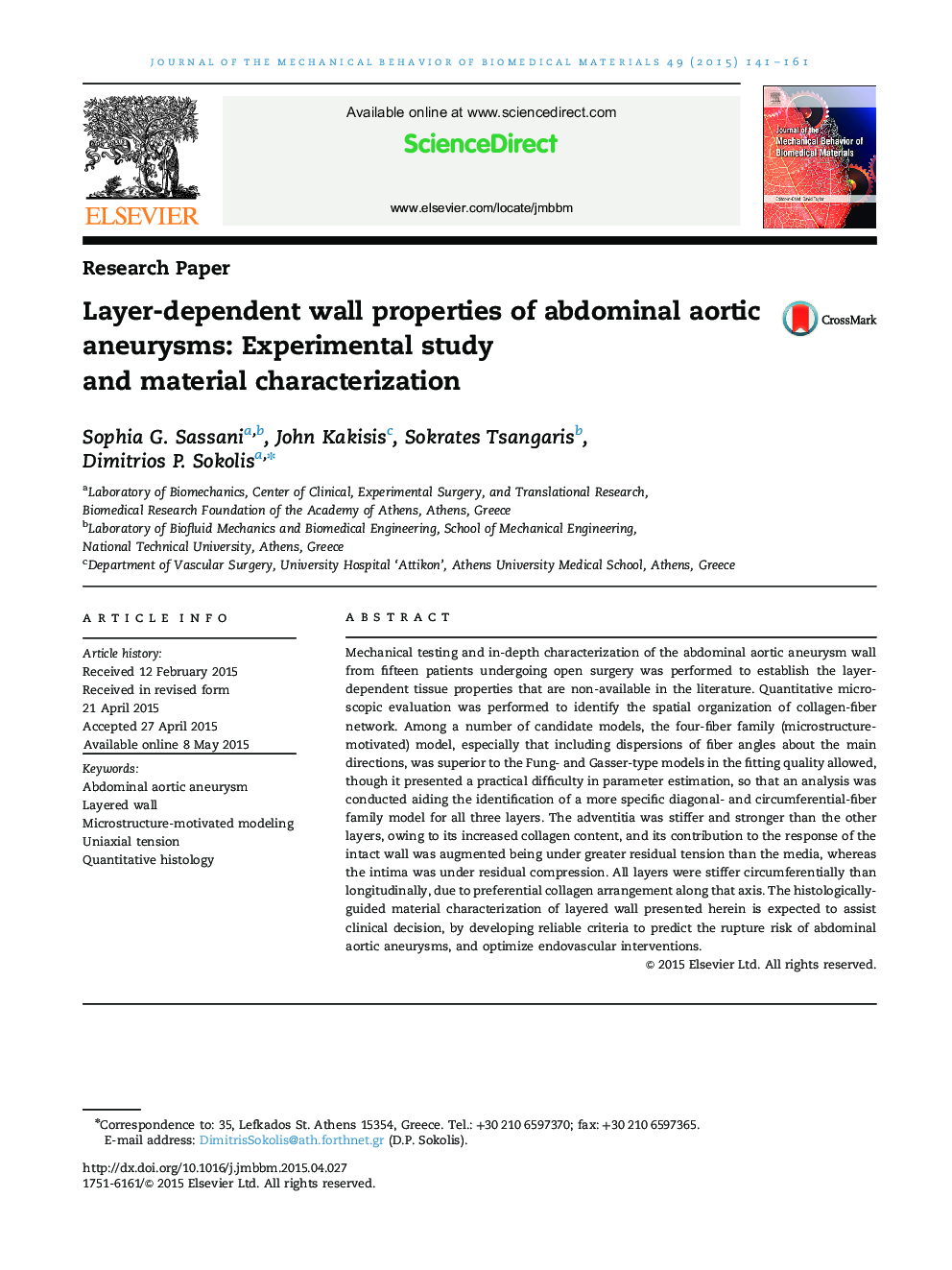| Article ID | Journal | Published Year | Pages | File Type |
|---|---|---|---|---|
| 810592 | Journal of the Mechanical Behavior of Biomedical Materials | 2015 | 21 Pages |
•Comprehensive 4-fiber family model for abdominal aortic aneurysm layered tissue.•Non-inclusion of longitudinal-fiber family confirmed by parametric analysis.•Circumferential- and diagonal-fiber families confirmed by histological analysis.•Intima under residual compression and adventitia under residual tension.•All layers stiffer circumferentially than longitudinally.
Mechanical testing and in-depth characterization of the abdominal aortic aneurysm wall from fifteen patients undergoing open surgery was performed to establish the layer-dependent tissue properties that are non-available in the literature. Quantitative microscopic evaluation was performed to identify the spatial organization of collagen-fiber network. Among a number of candidate models, the four-fiber family (microstructure-motivated) model, especially that including dispersions of fiber angles about the main directions, was superior to the Fung- and Gasser-type models in the fitting quality allowed, though it presented a practical difficulty in parameter estimation, so that an analysis was conducted aiding the identification of a more specific diagonal- and circumferential-fiber family model for all three layers. The adventitia was stiffer and stronger than the other layers, owing to its increased collagen content, and its contribution to the response of the intact wall was augmented being under greater residual tension than the media, whereas the intima was under residual compression. All layers were stiffer circumferentially than longitudinally, due to preferential collagen arrangement along that axis. The histologically-guided material characterization of layered wall presented herein is expected to assist clinical decision, by developing reliable criteria to predict the rupture risk of abdominal aortic aneurysms, and optimize endovascular interventions.
Graphical abstractFigure optionsDownload full-size imageDownload high-quality image (259 K)Download as PowerPoint slide
